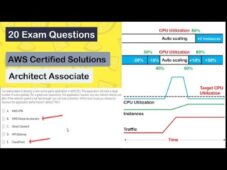Step Costs Definition, Importance, and Examples
Content

A person aware of these costs would advise getting one machine and producing 1,000 pens rather than 1,050. One machine costs $15,000 in total, but 1,000 pens generate $20,000 in revenue (1,000 x $20). 1) Employer liability insurance costs may remain quite stable until a certain threshold is reached. For example, it may cost €10,000 to have cover for up to 100 staff, but €15,000 if the staff number exceeds 100. From previous posts, you know what a fixed cost is. There is another type of fixed cost called a step (or stepped) fixed cost.
In addition, health and pension contributions may also change when staffing levels rise or fall above a predetermined level. In contrast, if business activity slows down, a significant portion of costs will decrease with a step-down. As a result, it is not uncommon for a company to choose not to take action to increase volume to keep profitability at current levels. Another option is to offer overtime to employees, so that the company can produce more units without hiring additional full-time staff.
Understanding step costing is extremely important when a company is about to reach a new and higher activity level, where it will be required to traverse a large step cost. In some cases, the step cost may eliminate profits that management had been expecting with increased volume. An example of a step cost might be a factory’s production supervisors’ salaries. As the factory production increases, it hires more supervisors to oversee the workers and operations. These supervisors are capable of overseeing a range of production volumes. The company may need to “step down” on costs if activity levels decline due to a drop in demand or production.
Step Costs
A proper management and control over costs is crucial to maintain and grow profits which is the primary objective of every commercial business. The first step in achieving this is to understand the nature of costs that a business incurs while carrying out its operations as well as the factors affecting those costs. When a company is about to reach a new and higher activity level where it will be necessary to traverse a large step cost, understanding step costing is crucial. The company must add another shift to produce 401 to 800 units because the production line is at capacity. The price of labor to make 401 units increased from $6,500 to $13,000.
Step costs move up and down in a step-like manner—horizontally over a range, then vertically, then horizontally, and so on. The opposite is true, too—if business activity slackens, a material portion of costs will drop, with a step-down. As you can see, the costs remain constant over a range of production and then steps up to the next cost level as production exceeds the relevant range. For instance, this company incurs $40,000 of expenses if it produces 15,000 units or 40,000. The costs jump up to $60,000 once the company produces 40,001 units.
Step costing is extremely important to be aware of when a company is about to reach a new and higher activity level where it must incur a large incremental step cost. In some cases, incurring the extra amount of a step cost may eliminate profits that management had been expecting with an increase in volume. Step costs remain constant for an activity level but change and tend to increase or decrease once a threshold is crossed. When a manufacturer’s production levels or the activity levels of any enterprise change, these costs change disproportionally. A step cost is a cost that does not change steadily with changes in activity volume, but rather at discrete points. The concept is used when making investment decisions and deciding whether to accept additional customer orders.
How to Calculate Mixed Costs
Step costs is an essential consideration for a business concern when it is on the verge of approaching a higher level of business activity. It’s crucial to keep in mind that any change in step costs shouldn’t lower the current level of profitability the company is experiencing. There could be an increase in profits overall if the decrease in costs is greater than the decline in profits. Some companies use management techniques to reduce costs (including step costs).
- It’s crucial to keep in mind that any change in step costs shouldn’t lower the current level of profitability the company is experiencing.
- Still, once it reaches another level, the cost to accommodate the extra business rises disproportionately (i.e., not marginally), with a step up higher.
- He is a CFA charterholder as well as holding FINRA Series 7, 55 & 63 licenses.
- After 40,000 units, one supervisor can’t oversee the operations.
They don’t gradually increase with production levels like variable costs. When activity levels drop below a predetermined threshold, management may need to step down just as much as they may need to step up costs. In such circumstances, management may decide to lower or do away with the related step fixed cost. Maintenance costs will thus increase with every 10,000 unit increase in production levels.
Understanding Step Costs
Step costs remain set until a certain production level but increase or decrease after that threshold is crossed. It is because the price fluctuates in a stair-step sequence, often horizontally, then vertically, then horizontally, and so on. It means that for a given level of operational activity, the business will incur a fixed cost. But as the activity level varies, the cost to accommodate the additional activities may increase or decrease disproportionately.

In the illustration, the price of a machinery is similar to how much steps cost. However, only one machine is needed to produce 500 or 750 pens. A step cost is also known as a stepped cost or a step-variable cost. For instance, FortisBC announced on July 17, 2019, that a $400 million expansion project had been completed, boosting the company’s capacity from 35,000 to 250,000 tonnes. As a result, FortisBC’s project to expand its facility is a step forward. At the specified production level, the company would be making a profit of $5,000.
As another example, a company can produce 10,000 widgets during one eight-hour shift. If the company receives additional customer orders for more widgets, then it must add another shift, which requires the services of an additional shift supervisor. Thus, the cost of the shift supervisor is a step cost that occurs when the company reaches a production requirement of 10,001 widgets. This new level of step cost will continue until yet another shift must be added, at which point the company will incur another step cost for the shift supervisor for the night shift. For example, a cost can be say $100 up to 500units, increase to $185 for 501 to 1,000 units and to $260 if output crosses 1,000 units. The cost with such a pattern of increase would be classified as step variable cost.
Applications of Steps Costs
Understanding the nature and behavior of a particular cost element is much important for managers in exercising their decision making function. Once a cost is correctly categorized, effective cost control and cost management policies can be devised and implemented successfully. Adam Hayes, Ph.D., CFA, is a financial writer with 15+ years Wall Street experience as a derivatives trader. Besides his extensive derivative trading expertise, Adam is an expert in economics and behavioral finance. Adam received his master’s in economics from The New School for Social Research and his Ph.D. from the University of Wisconsin-Madison in sociology. He is a CFA charterholder as well as holding FINRA Series 7, 55 & 63 licenses.

The fixed component does not change with the level of production activity. On the contrary, the variable cost changes with the level of production. Generally, the variable cost varies directly with the level of output. Thus, mixed costs cannot be classified purely as fixed costs or variable costs.
It would not be cost-effective for the business to produce an additional 50 pens in such a situation. In the aforementioned example, a second, $15,000 machine would produce an extra 50 pens, yielding $100 in revenue. A high-tech gear manufacturer makes 400 virtual reality headsets in one shift of eight hours with 25 employees and one supervisor. All of the headsets are shipped out, and there is no inventory. Wages and benefits for these employees amount to $6,500 per shift. Therefore, the company should only operate two machines and produce 100 widgets.
A threshold breach can result in one of two conditions in regard to a step fixed cost, as noted next. As these costs vary directly in proportion to the level of production, they would not be incurred in situations where production level is zero. The company can employ one supervisor to oversee the production volumes between 15,000 units and 40,000 units. After 40,000 units, one supervisor can’t oversee the operations. Another supervisor must be added, so between volumes of 40,001 and 65,000 units two supervisors must be hired.
What are Step Costs?
Mixed costs are those costs that contain a fixed cost and variable cost as part of their components. Step costs do not vary according to the level of activity or output up to a specific limit. Based on the incremental benefit that the decision will bring, step cost is a crucial consideration when determining whether the business’s activity level can be increased or not.



